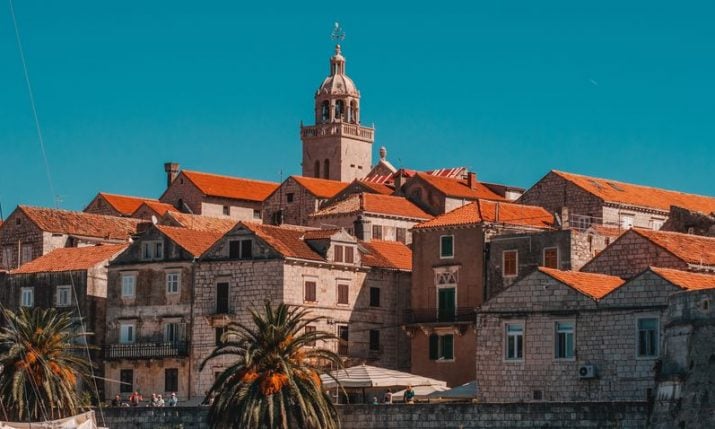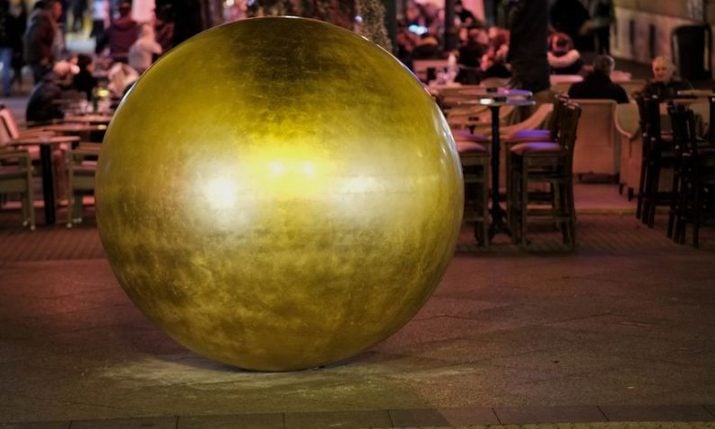Slaven Lunar Kosanović’s ‘Continents’ Exhibition to Open in Zagreb this Week
- by croatiaweek
- in Entertainment
 The works of Croatia’s leading graffiti artist will be on display again at an exhibition which opens in the Croatian capital this week. Slaven Lunar Kosanović’s ‘Continents’ exhibition opens on Thursday (8 January) and runs through until 15 January at Zagreb’s Galerija Karas…
The works of Croatia’s leading graffiti artist will be on display again at an exhibition which opens in the Croatian capital this week. Slaven Lunar Kosanović’s ‘Continents’ exhibition opens on Thursday (8 January) and runs through until 15 January at Zagreb’s Galerija Karas…
It is by no means a coincidence that Slaven Kosanović used cats in his previous cycle, The Golden Age of Ballooning, the perpetual protagonists of his artistic visions, on a journey through air space. After the balloon and zeppelin rides, as well as introspective, nostalgic and melancholic dreamy rides up in the air, he has directed their eyes towards Earth. They landed on the continents: Europe, Africa, Australia and Oceania, North America, South America and Antarctica.
Encouraged by his own travels, which his graffiti projects often take him and inspired mostly by his recent trip to the far away Australia as well as a fascination with foreign cultures and countries, which he has nurtured since childhood, Slaven started creating a new cycle. In the condensed compositions inside of a square format of the canvas, Slaven places (of course) cats as well as other animals and people, from a recent or distant past, which associate him to a certain continent. The horror vacui, multiple character overlaps and the stylization remind us of his street art accomplishments, but Slaven is gradually liberating and refining his signature. He is becoming softer, more fluid, more detail-oriented and more concentrated on tones and lines.
The backbone of each canvas is a different colour scale, which indicates the subjective perception of character, climate and environment of each continent. This selection of colour scales did not occur from perhaps predictable decorative reasons, but from thoroughly contemplating colour symbolism, just like Slaven did in The Golden Age of Ballooning. For example, the Europe canvas features light orange which signifies suppression of emotions or perhaps white, which suggests loss of soul. The light red reminds us of the blood shed during colonial times. The South American canvas in return, features a bright orange hue, which symbolizes hot temper, so often associated with the continent.
Each continent is a sum of very different countries (between which, in this case, there are no borders), history and traditions; therefore the choice of certain representatives of the flora, fauna and historical figures is the reflection of Slaven’s own interests.
The characters show what has formed Slaven as an author and as a person – for example, Matt Groening, the author of The Simpson, Nikola Tesla, who truly belongs on the European and North American canvas, and many other artists, politicians and famous persons. However, he doesn’t bypass the anonymous, such as the conquistadors or farmers of the Andes, or a Greek police officer and an anti-government protestor.
Slaven subtly comments the past and present without delivering a redundancy of agitating narration. He also brings a dose of benevolent humour, a very characteristic trait, which also manifests in the formation of human figures, which are depicted with (slight) animalistic attributes.
The cycle also features and eighth canvas. It represents a transitory reality of all those crossing from one continent to another. Sometimes it is a terrifying and tragic reality of the flight of refugees, and sometimes it is the fate of seafarers or the adventures of travellers. This is a constant theme of mobility, which is especially present today, when, thanks to the advancement of transportation and communication, we are so much closer and yet, due to growing social differences, various bans and regulations, so far away.
Slaven Kosanović consistently creates and upgrades his own imaginarium and bestiary. Because the world is a menagerie, sometimes more, and sometimes less vicious and dangerous. Each generation builds its own imaginarium in which it attempts to transfuse understanding and regard for the near and far. In the end, we go back to the number of paintings in the cycle: seven plus one gives us eight, the number of four main directions along with secondary directions. Eight is also the number of cosmic or central balance, which, along with discernible joy featured in the compositions and some downcast moments; Slaven shows an optimism and faith in the renewal of man and the world.
Barbara Vujanović









